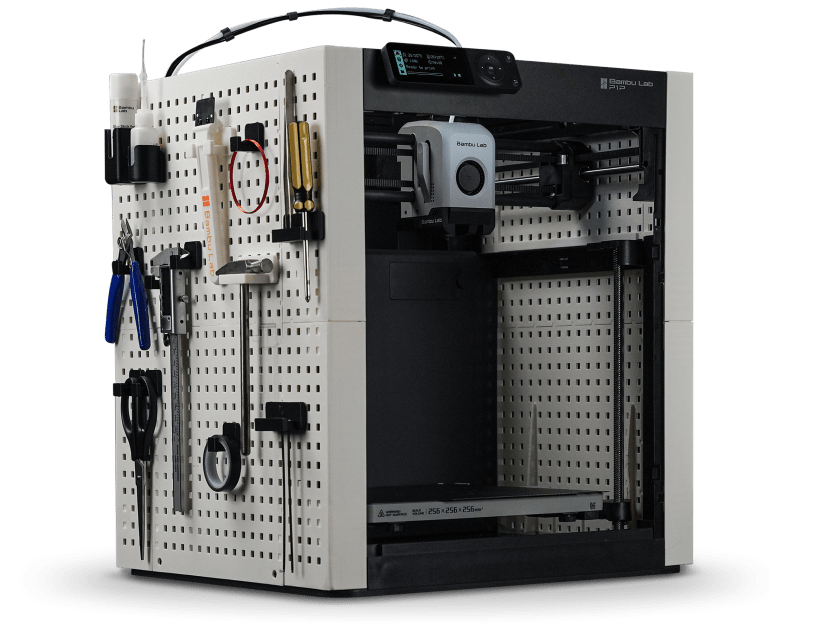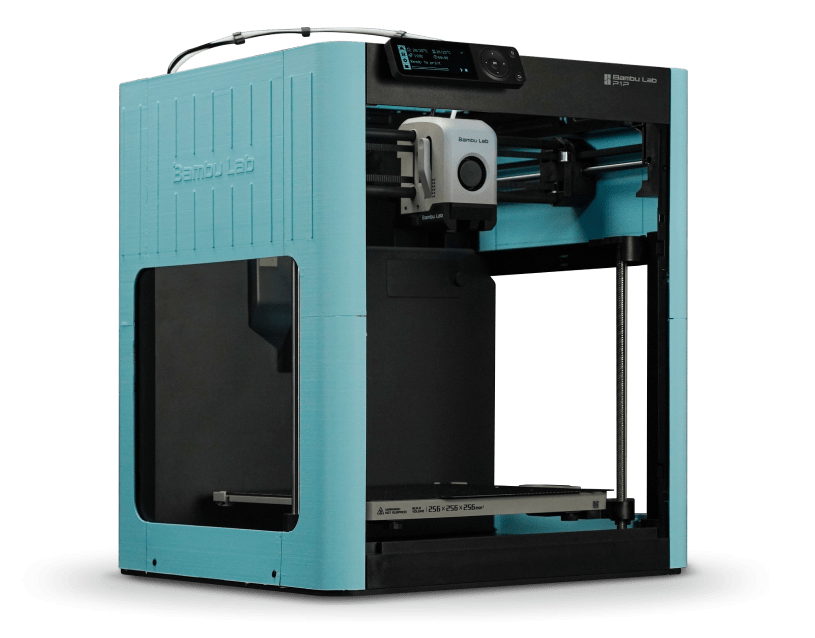You can transform your Bambu Lab P1P with customised side panels printed directly from your machine. The company provides downloadable 3MF files for various modplate designs or frame models to create your own panels.
Download includes installation instructions and 3D models compatible with Bambu Studio software. The panels replace standard factory parts with designs that match your requirements.
Understanding modplate options
Bambu Lab offers multiple modplate designs for your P1P printer, each with distinct visual elements. Depending on your aesthetic preferences, you can choose from Pixel, Armor, Pegboard, Artistry, or Lily modplates.

The Armor modplate has multiple colour variants, including Meteorite Grey, Hot Rod Red, Earth Brown, and Lake Blue.
You can match these variants with specific Bambu Lab filaments, like PLA Basic Silver or PLA Matte Ice Blue, for optimal results. The materials recommended for each design ensure proper fit and finish when installed on your printer.
Downloading necessary files
Bambu Lab hosts all required files on their Wiki with regular updates to improve models and compatibility. You can download specific 3MF files paired with corresponding instruction documents for your chosen modplate design.

Frame model files in both 3DM and STP formats allow for further customisation if desired. Recent updates have optimised the models and improved compatibility with newer versions of Bambu Studio software.
You should update to the latest Bambu Studio version for optimal printing results with these files. File improvements come from company engineers and community feedback, ensuring reliable performance across different printer configurations.
Checking printer compatibility
Two base versions exist for the Bambu Lab P1P model, with important differences affecting panel installation. Before proceeding with installation, you must check whether your printer base includes side panel tab slots. Earlier Bambu Lab P1P shipments featured bases without tab slots, while newer units included these slots for panel alignment.
Side panels shipped by Bambu Lab have changed similarly, with newer panels featuring tabs absent from earlier versions.
If your printer has an older base without corresponding slots, you might need to remove tabs from newer side panels. Physical modification ensures proper fit regardless of when you purchased your printer.
Printing your side panels
Load your 3MF file into Bambu Studio and select the appropriate filament matching the design recommendations.
Your print settings should follow standard parameters for functional parts with attention to dimensional accuracy and surface finish. Print preparation might include modifications based on your printer configuration and base type.
Monitor print progress closely, as these panels represent larger print jobs requiring stability throughout the process. Your filament selection impacts the finished panels’ visual appeal and structural integrity. Consider using manufacturer-recommended materials for best results with these designs.
Creating custom designs
Beyond pre-designed options, you can create entirely original side panels using provided frame models. To develop custom designs, you need 3D modelling skills and software compatible with 3DM or STP files.
Creative freedom allows the integration of functional elements like tool holders or decorative patterns reflecting personal style. Alternatively, you can find third-party modplate designs on 3D file-sharing sites like Bambu Lab MakerWorld.
New to Bambu Lab?
The Bambu Lab P1P is a plug-and-play 3D printer ready to use in 15 minutes. At £419 including VAT, it offers high-speed printing (500 mm/s) with exceptional acceleration (20,000 mm/s²), allowing for faster project completion than typical entry-level printers.
Its automatic bed levelling for consistent first layers and straightforward setup — no tinkering required — make it beginner-friendly. It works with common filaments like PLA and PETG out of the box.
The P1P integrates seamlessly with Bambu Studio software, simplifying the slicing process with pre-configured profiles and a user-friendly interface. It also connects with the Bambu Handy mobile app, allowing remote monitoring and control of your prints through the built-in camera.
Additional reading: How to Swap Bambu Lab P1P Filament
Official reading: P1P Modplate Customization | Bambu Lab Wiki




